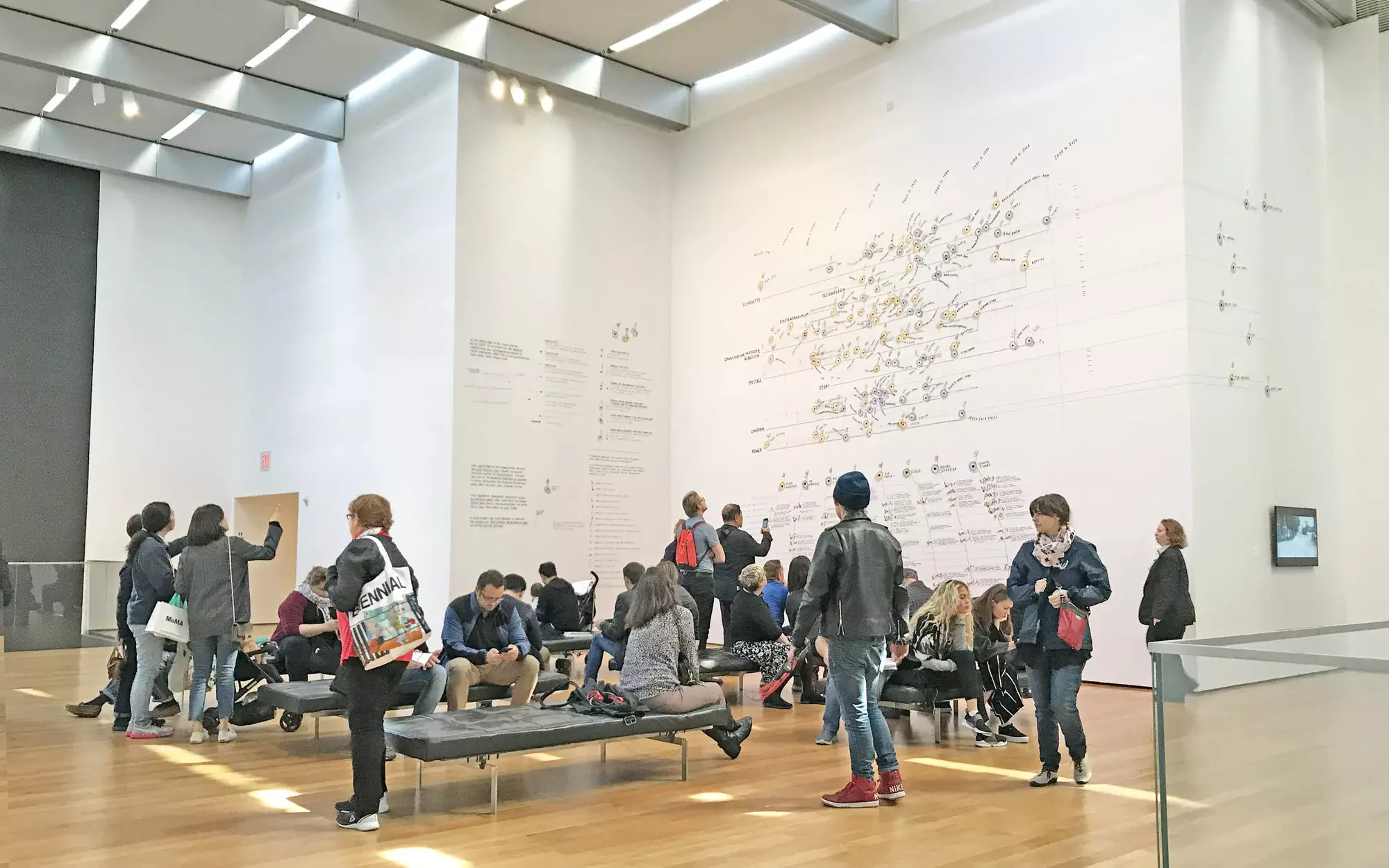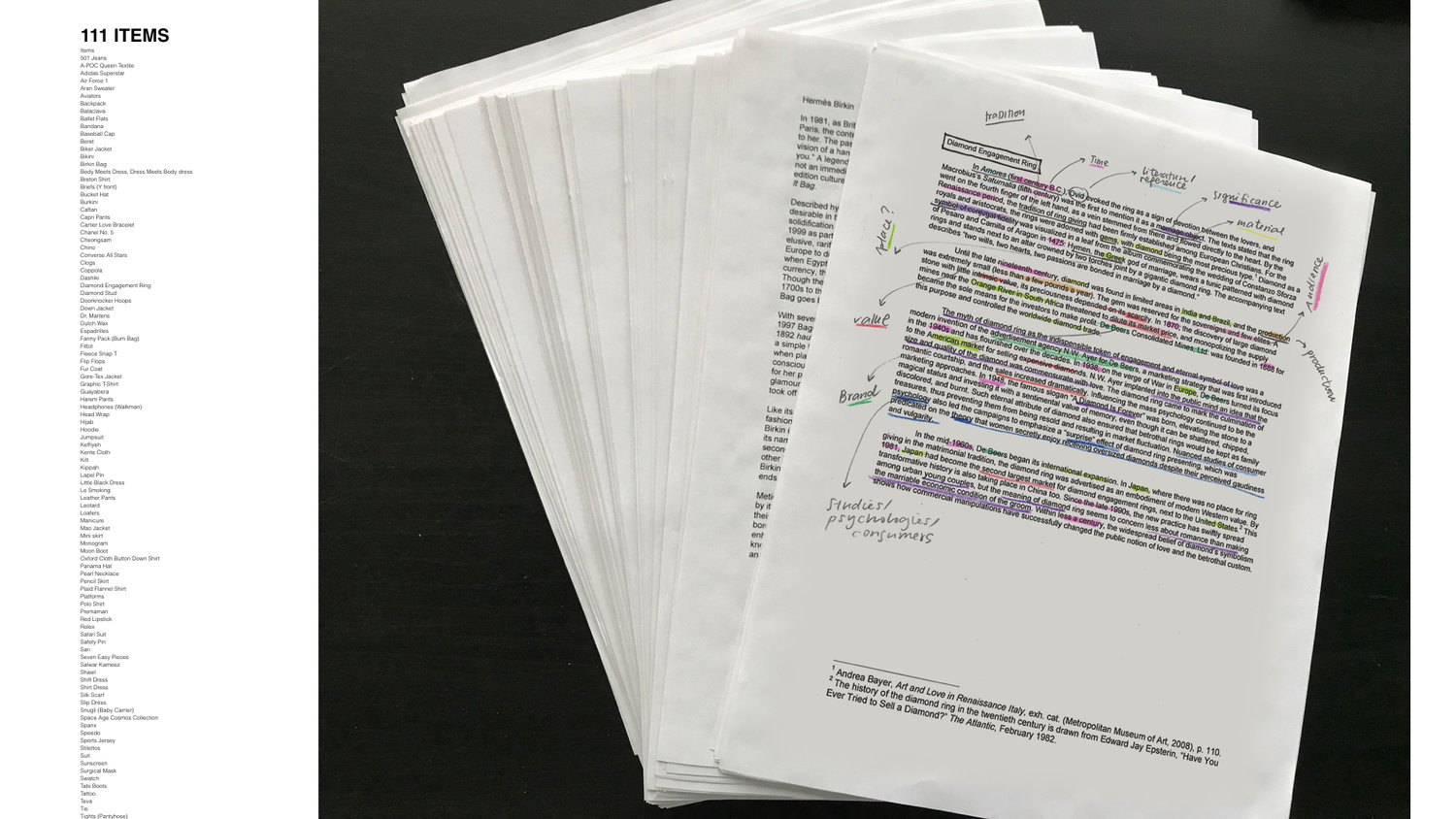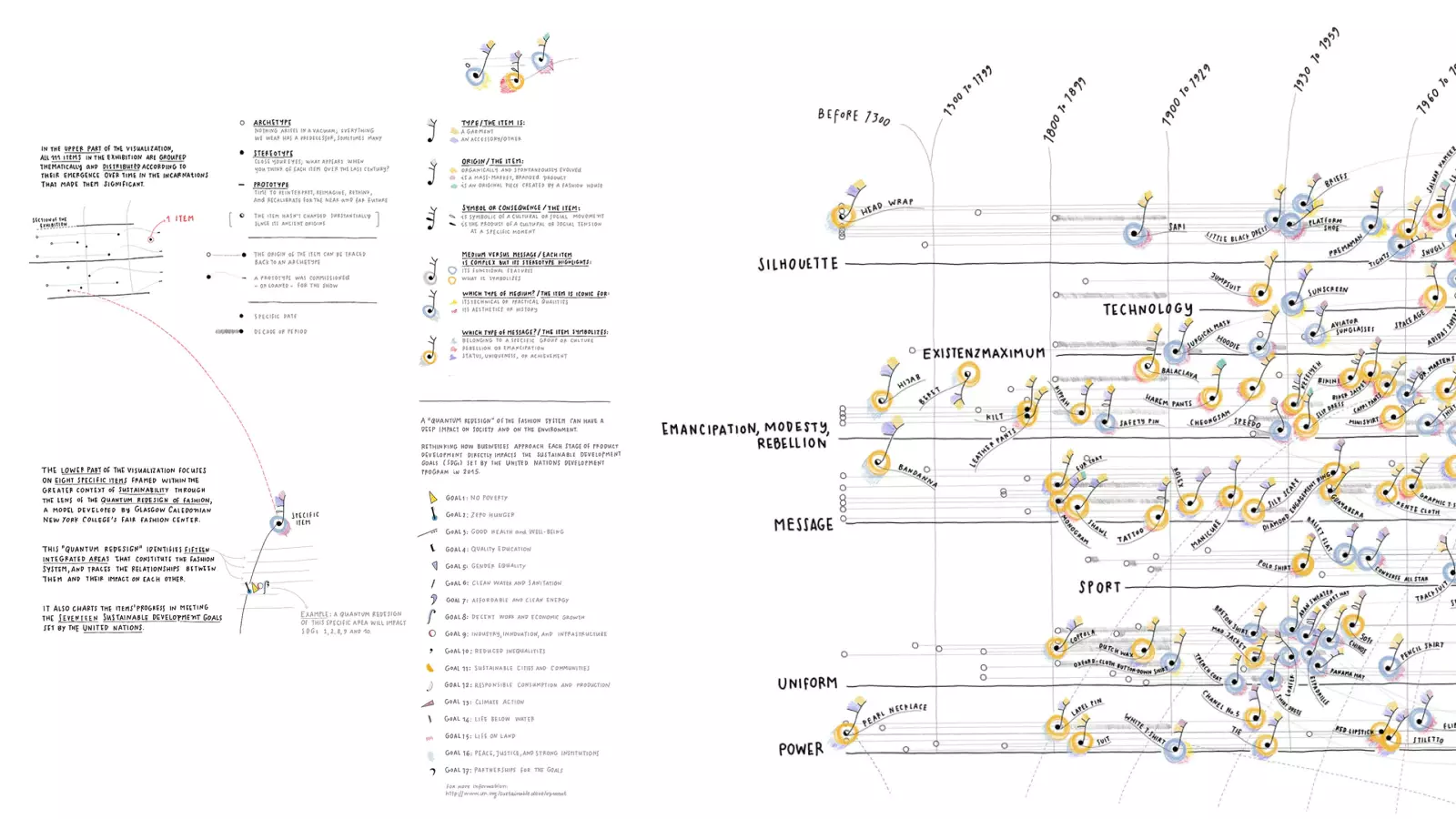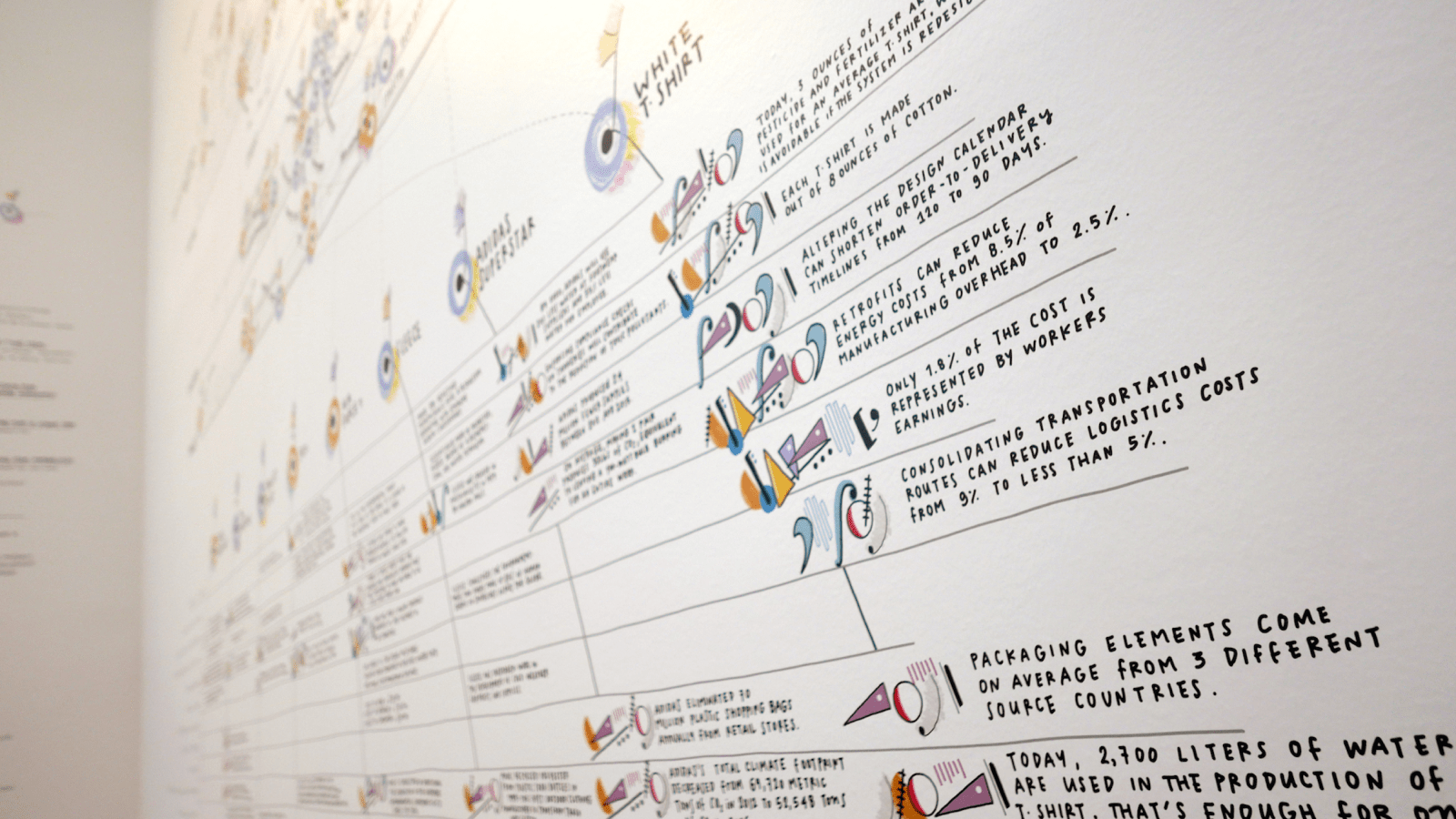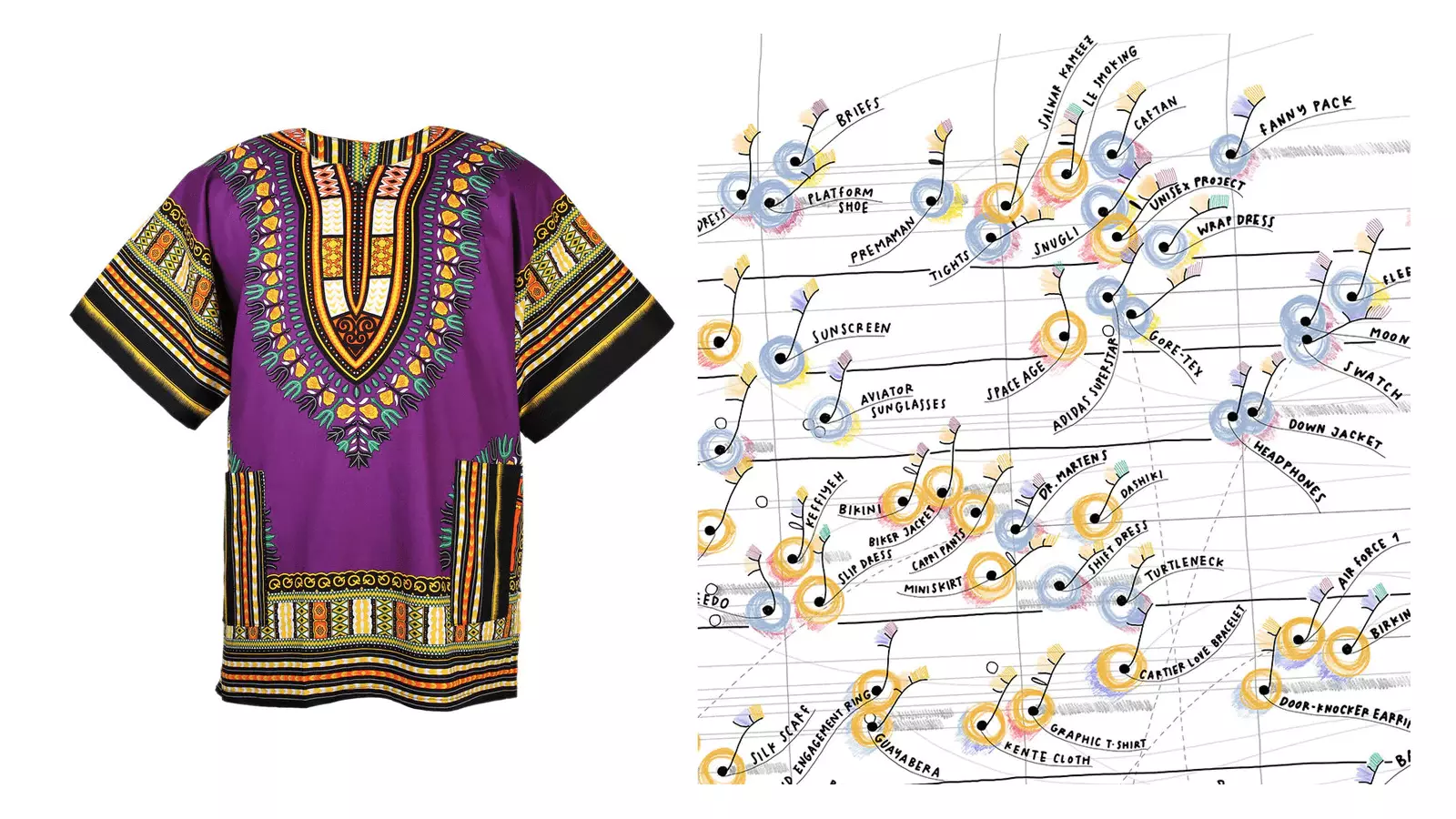The second layer, situated under the first, homes in on the commercial lifecycle of eight Capstone objects, using the “Quantum Redesign of Fashion” framework developed by Glasgow Caledonian New York College’s Fair Fashion Center. This model identifies 15 areas for intervention in the fashion industry and ties them to Sustainable Development Goals (SDG) set forth by the United Nations in 2015. Our dataviz uses original symbology to denote each of the SDGs, and places them according to where they'll have the biggest impact in disrupting current systems.
With Data Items: A Fashion Landscape, we aimed to provide an alternative way of looking at the exhibition's 111 objects. While the Items spanned time periods and continents, our mural showed how they could be thought of as part of a complex—yet unified—ecosystem: a step towards alignment in tackling the global issue of sustainability. Positioned near the exit of the exhibition, Data Items also served to leave visitors with an impression that reinforced the mission of the show: that object–oriented analysis could be done meaningfully, and with respect to the idiosyncratic nature of each piece.
